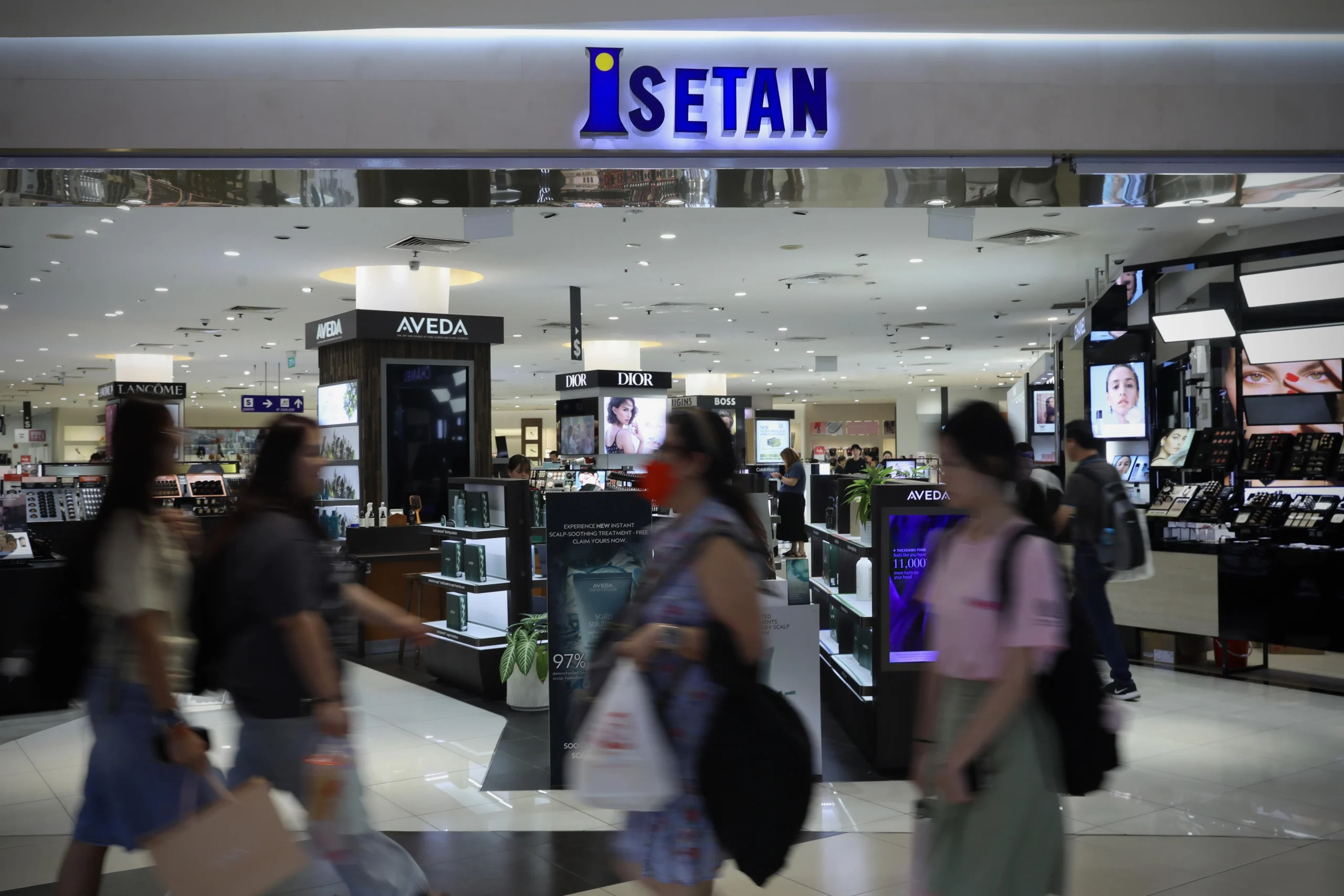[SINGAPORE] Once coveted as anchor tenants by malls, department stores are threatened by the rise of e-commerce and shifting consumer preferences.
The impending closure of Isetan’s Tampines Mall outlet, announced in May, is the latest in a series of shutterings since Covid-19.
To stay competitive, department stores should consider smaller stores with tighter product curation, as well as in-store experiences, observers told The Business Times.
A spokesperson said the decision was made “in light of evolving market conditions”, as part of a broader strategic move to realign operations for “long-term sustainability and growth”.
A NEWSLETTER FOR YOU

Tuesday, 12 pm
Property Insights
Get an exclusive analysis of real estate and property news in Singapore and beyond.
In 2019, Metro closed its flagship Centrepoint store, leaving it with its outlets at Paragon and Causeway Point.
In 2022, OG shut its Orchard Point store after 18 years; it now has outlets only at People’s Park and Albert Street.
BHG Singapore has closed five stores here since 2022, most recently its Junction 8 branch in March. It retains its Bugis flagship and its Centrepoint outlet, which opened in February.
British retailer Marks & Spencer closed its Parkway Parade outlet in February, leaving it with seven locations, according to its website.
Other department stores have exited entirely. Robinsons shuttered its last store at Raffles City in January 2021 – though it later returned as an online retailer – and John Little closed its last store in Plaza Singapura in late 2016.

Isetan’s spokesperson said the retailer remains “fully committed” to serving customers through existing stores and “evolving” retail platforms, and will continue its “journey with the community in new and meaningful ways”, but declined to give details.
OG, Metro and BHG declined to comment on their Singapore plans, while Takashimaya and Marks & Spencer did not respond to queries from BT.
Weaker offline
One reason for this decline is the rise of online shopping, especially during the pandemic, said observers.
Many brands carried by department stores are available online and for less, said Dr Elhajjar.
Malls are instead focusing on offerings “that e-commerce cannot replicate”, such as food streets, indoor playgrounds, boutique gyms and dental clinics, he said.
In physical retail, specialised formats have supplanted department stores’ one-stop concept, said Alan Cheong, Savills Singapore’s executive director for research and consultancy.
He cited low-cost shops such as Daiso and Japanmart, specialty retailers such as cosmetics chain Sephora, and high-end luxury maisons.

Today’s consumers prioritise immersive brand experiences over product availability, said Wong Xian Yang, Cushman & Wakefield’s head of research for Singapore and South-east Asia.
Brands have opened specialty stores “where they can control distribution and craft memorable experiences” – and department stores have thus lost significance as a way to reach consumers.
The homogeneity of department stores – with the same layout, brands and regular sales – also means “weak brand excitement” for younger shoppers, added Dr Elhajjar.
Another factor is that large retail footprints mean high fixed costs.
Traditional department stores range from 30,000 square feet to over 150,000 sq ft, Dr Elhajjar noted. For instance, Robinsons’ now-defunct flagship at The Heeren occupied 186,000 sq ft across six floors.
“If foot traffic drops, or sales per square foot aren’t high, the cost of running these massive spaces just doesn’t make sense anymore,” he said.
Global decline
The decline of Singapore’s department stores is part of a global phenomenon.
In February 2024, US juggernaut Macy’s said it would close 150 underperforming stores – almost a third of its total – by 2026.
After 242 years in business, British retail institution Debenhams closed its remaining stores in the UK and Ireland in 2021, and later relaunched itself as an online retailer.
Another long-established British chain, Beales, fell into administration in 2020 and closed 22 of 23 stores. Its final store is set to close on Saturday (May 31).

Sulian Tan-Wijaya, executive director for retail and lifestyle at Savills Singapore, said: “The department stores that closed were either not keeping up with new and emerging consumer and retail trends, or were part of consolidation plans by chains which had over-expanded in prior years.”
In contrast, some stores have survived by offering younger shoppers physical experiences “they can’t get online”, she noted.
Upscale UK retailers Selfridges and Harrods have “evolved successfully” with their brand mix, retail formats and shopping experiences, down to the choice of food and beverage tenants and music, she said.
She also cited Japanese chain Mitsukoshi, which has a rooftop garden at its Ginza outlet in Tokyo.
Wong suggested that to stay relevant, department stores can consider “smaller, more agile formats” in areas with high footfall, cutting costs while offering a more targeted product range.
Department stores need a “significant strategy overhaul”, said Dr Elhajjar. “Most importantly, they have to stop thinking in square footage and start thinking in relevance per square metre.”
He listed several approaches. Stores can rethink their product mix, “moving away from generic, mass-market goods and bringing in more differentiated, high-margin or exclusive items”.
They can reinvent the in-store experience or become lifestyle concept stores. They can also create a community by hosting workshops or personalised events, and collaborate with brands or influencers to offer exclusive collections.
“Department stores that are willing to evolve, experiment and align themselves with the changing habits of modern shoppers still have a chance – but only if they move boldly, not incrementally.”
Rejuvenation efforts

Post-Covid, home-grown department store Tangs has reorganised its retail space and refreshed the offerings at its Tang Plaza and VivoCity branches, said a spokesperson.
This is to better cater to its shopper base, with 80 per cent being female professionals, stay-at-home mothers and their families.
For instance, the kids’ section has widened its range of apparel, baby care and toys, in response to rising demand from young families.
Other changes reflect a shift towards experiences. The VivoCity store has partnered toy brands such as Jellycat and Miffy, as well as cosmetics brands Bobbi Brown and Estee Lauder, to create “shop-in-shop” experiential zones.
The revamped Tang Plaza basement will reopen in August with more than 70 per cent of space going to F&B, up from 15 per cent before.
Tang Plaza’s beauty and wellness offerings have also been expanded, with the addition of services such as a new dental clinic and aesthetic clinic.
A Tangs spokesperson said: “The pandemic has irreversibly shifted the retail landscape, requiring us to rethink how we do business.”
While retail remains a “challenging space”, the department store is “committed to evolving, rather than retreating”, the spokesperson added.


